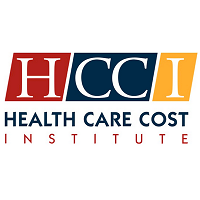 Examines impact of provider consolidation and nurse practitioners on spending; opioid use among patients seen by physical therapists, and more
Examines impact of provider consolidation and nurse practitioners on spending; opioid use among patients seen by physical therapists, and more
The Health Care Cost Institute (HCCI) (@HealthCostInst) released a set of six policy briefs assessing the impact of a range of national and state policies on health care costs and utilization. The briefs were developed by independent researchers using HCCI’s repository of commercial claims data for over 50 million insured Americans – one of the largest private health insurance claims databases of its kind.
“Currently, we have limited information on the effects of reforms happening at the state and national levels,” said HCCI Senior Researcher Amanda Frost. “We believe that this data-driven research will build a knowledge base about the changing healthcare landscape, and serve as a resource for policymakers and consumers alike.”
Key findings from the six policy briefs include:
- Provider consolidation drives up spending on cancer treatment. An analysis led by Rena Conti at the University of Chicago finds that the consolidation of outpatient practices drove significant increases in cancer treatment spending in large part because of the additional facility fees that hospital outpatient departments and their affiliated clinics are able to charge insurers. Consolidation also appears to increase the use of more expensive medicines and other outpatient care components.
- Unrestricted access to physical therapy reduces opioid use and lowers costs. Seeing a physical therapist as the first point of care for lower back pain reduces potentially costly services later on, including emergency department visits and use of prescription opioids, according to an analysis by Bianca Frogner at the University of Washington and colleagues. The researchers studied patient claims data in six states in the northwestern region of the U.S. and found that patients who sought physical therapy first for lower back pain had significantly lower costs, including out-of-pocket costs, for physician, outpatient, hospital, and pharmacy care compared to patients who saw another type of provider.
- Nurse practitioners push down the price of primary care. Ulrike Muench of the University of California San Francisco and colleagues examined the effects of independent scope-of-practice laws in states from 2008-2012, which allow nurse practitioners to treat patients without a supervising physician. They found that prices for primary care services fell by 1 to 4 percent. However, spending on health care increased. Higher total health care costs may be a result of increased volume in services, which may stem from increased access to care, say the researchers.
- Designing insurance benefits to incentivize patients to choose low-priced providers for colonoscopies can lead to savings of 8.5 percent per procedure. Christopher Whaley and colleagues at the University of California Berkeley estimate that if just three health insurers-Aetna, Humana and UnitedHealthcare-adopted a reference-based payments program for colonoscopies, U.S. medical spending would decrease by approximately $95 million per year. These estimates were modeled on the health care savings of the California Public Employees’ Retirement System (CalPERS). An interactive map allows employers and insurers to investigate the effectiveness of such programs in local markets across the U.S.
- Reimbursement for telehealth services is nearly 40 percent lower than non-telehealth care. Fernando Wilson of the University of Nebraska Medical Center’s College of Public Health and coauthors found that, while telehealth claims submitted by primary care providers have increased from 1,246 claims in 2009 to 2,558 in 2013, they continued to be reimbursed at lower rates. While many states permit reimbursements for telehealth services, only seven states have passed laws that mandate reimbursement parity between telehealth and non-telehealth care.
- Mental Health Parity law has limited effect on access to mental health services. Benjamin Miller of the University of Colorado School of Medicine and colleagues found that the passage of the Mental Health Parity and Addiction Equity Act (MHPAEA) has had little to no effect on access and use of mental health services for patients with depression, bipolar, or schizophrenia. When examining comparison of states with minimal parity laws prior to implementation of MHPAEA, the number of visits to mental health providers did not increase as would be expected if parity had increased access to care. Results from this research highlight the limitations of mental health parity; specifically, parity laws may not have had their intended effect of increasing access and utilization of mental health services.
HCCI holds de-identified Health Insurance Portability and Accountability Act (HIPAA) compliant claims data from three of the nation’s largest health insurance providers. The data represent the health care activity of over 25 percent of the nation’s privately insured population.
“We are pleased to be a data resource for independent researchers who can drill down into the issues that impact our nation’s health,” said HCCI Executive Director David Newman. “This research builds on the national reporting and analysis that HCCI continues to focus on in its own work.”
The briefs were developed through HCCI’s State Health Policy Grant Program which was funded by a $1.5 million grant from the Laura and John Arnold Foundation, and carried out in partnership with the National Academy for State Health Policy.
The full reports can be accessed on this website.
